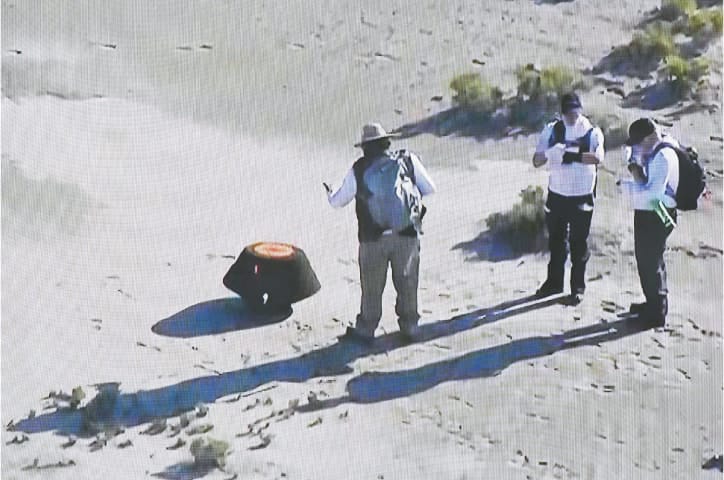In a historic first, the culmination of a seven-year space odyssey took place on Sunday as a NASA capsule safely touched down in the desert of Utah, USA. This capsule carried the largest asteroid samples ever collected, marking a monumental achievement in the realm of space exploration. As the world watched, the successful return of the Osiris-Rex probe’s sample return capsule brought scientists, engineers, and space enthusiasts to their feet in applause. With high hopes and a fervent curiosity, scientists believe that this invaluable sample will unravel the mysteries of our solar system’s formation and shed light on the genesis of our habitable Earth.
Astronomical Accomplishment
Completing an awe-inspiring journey spanning a staggering 3.86 billion miles (6.21 billion kilometers), this mission stands as the United States’ first-ever sample return mission of its kind. NASA’s Chief, Bill Nelson, hailed this monumental achievement as a giant leap for scientific understanding, emphasizing that the asteroid dust collected will provide scientists with an extraordinary glimpse into the beginnings of our solar system.
The heart-stopping final descent of the Osiris-Rex probe through Earth’s atmosphere was nothing short of perilous. However, NASA’s precision engineering ensured a gentle touchdown at precisely 8:52 am local time (1452 GMT) in the Utah Test and Training Range, underlining the agency’s expertise and commitment to scientific advancement.
Unlocking the Secrets of Space
Four years after its inception in 2016, the Osiris-Rex probe not only reached its destination, the asteroid Bennu, but also collected a substantial payload of roughly nine ounces (250 grams) of dust from the asteroid’s rocky surface. NASA’s anticipation is palpable as even this seemingly small amount is expected to provide profound insights into the types of asteroids that could potentially pose threats to Earth. Dr. Amy Simon, a NASA scientist, enthused, “This is going to be the biggest sample we’ve brought back since the Apollo moon rocks.”
While the mission posed formidable challenges, the journey itself was an incredible feat. The capsule, released at an altitude of over 67,000 miles, experienced a fiery passage through Earth’s atmosphere in its last 13 minutes, hurtling towards Earth at speeds exceeding 27,000 miles per hour. Two successive parachutes were meant to slow its descent, but the main chute deployed much higher than anticipated. However, meticulous planning and execution ensured the capsule’s integrity remained intact, preventing any contamination of the sample with desert sands.
Global Collaboration for Scientific Discovery
The significance of this mission extends beyond national borders, as global cooperation in the pursuit of knowledge takes center stage. As the Osiris-Rex probe departs for its next mission to rendezvous with another asteroid named Apophis, international collaboration is set to expand even further. Scientists predict that Apophis will come within a mere 20,000 miles of Earth in 2029, prompting further exploration of the cosmos.
In the days ahead, the sample will journey to the Johnson Space Center in Houston for in-depth analysis. NASA plans to unveil its initial findings at a highly anticipated news conference on October 11th. The majority of the sample will be preserved for future generations of scientists, while a quarter will be immediately utilized in experiments. A small portion will also be shared with mission partners in Japan and Canada.
Japan, in particular, has been actively contributing to the global scientific endeavor by providing NASA with samples from asteroid Ryugu, collected during the Hayabusa-2 mission in 2020. This international synergy underscores the collective pursuit of knowledge that transcends borders and unites humanity in the quest to understand our origins.
In essence, these asteroids are composed of the original materials of our solar system, dating back approximately 4.5 billion years, providing essential clues about how our celestial neighborhood formed and evolved. As Melissa Morris, the Osiris-Rex program executive, aptly put it, “It’s our own origin story.” These celestial bodies, through impacts with Earth, may have even delivered organic material and water, nurturing the conditions for life to flourish on our planet. In the grand tapestry of the cosmos, this historic mission is a defining thread, connecting us to the very fabric of the universe.















